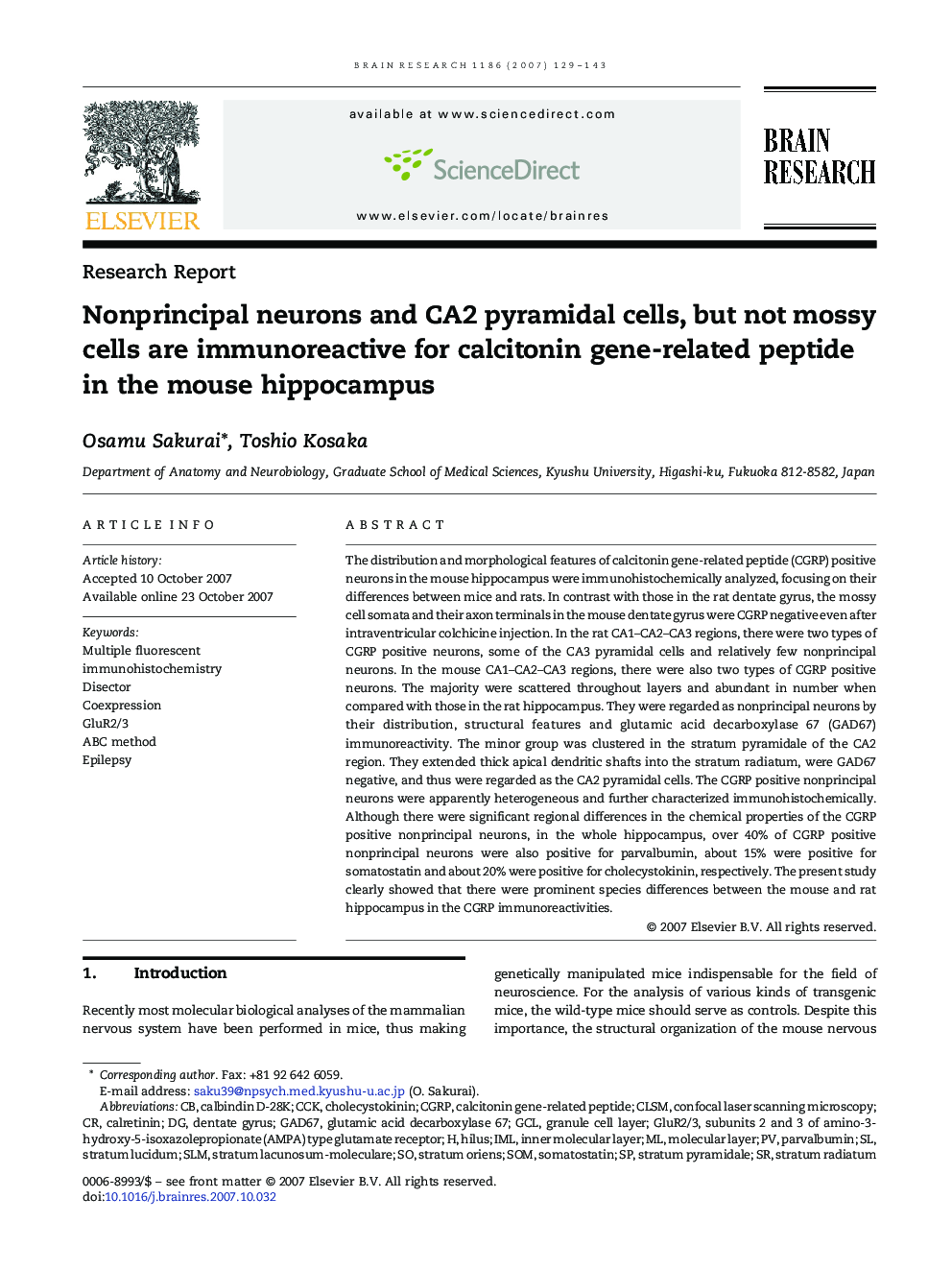| Article ID | Journal | Published Year | Pages | File Type |
|---|---|---|---|---|
| 4330275 | Brain Research | 2007 | 15 Pages |
The distribution and morphological features of calcitonin gene-related peptide (CGRP) positive neurons in the mouse hippocampus were immunohistochemically analyzed, focusing on their differences between mice and rats. In contrast with those in the rat dentate gyrus, the mossy cell somata and their axon terminals in the mouse dentate gyrus were CGRP negative even after intraventricular colchicine injection. In the rat CA1–CA2–CA3 regions, there were two types of CGRP positive neurons, some of the CA3 pyramidal cells and relatively few nonprincipal neurons. In the mouse CA1–CA2–CA3 regions, there were also two types of CGRP positive neurons. The majority were scattered throughout layers and abundant in number when compared with those in the rat hippocampus. They were regarded as nonprincipal neurons by their distribution, structural features and glutamic acid decarboxylase 67 (GAD67) immunoreactivity. The minor group was clustered in the stratum pyramidale of the CA2 region. They extended thick apical dendritic shafts into the stratum radiatum, were GAD67 negative, and thus were regarded as the CA2 pyramidal cells. The CGRP positive nonprincipal neurons were apparently heterogeneous and further characterized immunohistochemically. Although there were significant regional differences in the chemical properties of the CGRP positive nonprincipal neurons, in the whole hippocampus, over 40% of CGRP positive nonprincipal neurons were also positive for parvalbumin, about 15% were positive for somatostatin and about 20% were positive for cholecystokinin, respectively. The present study clearly showed that there were prominent species differences between the mouse and rat hippocampus in the CGRP immunoreactivities.
